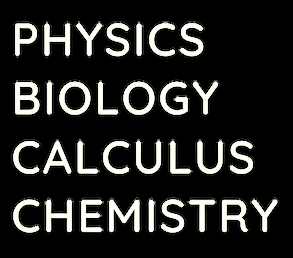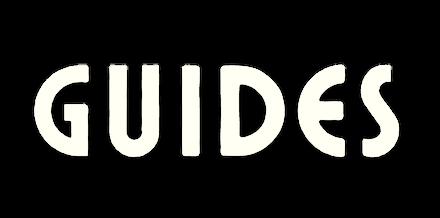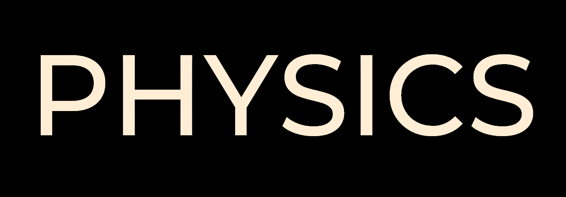






KELVIN LAM
Introduction:
I’m a rising Senior in high school and will be graduating as part of the class of 2024. I’ve been taking AP tests throughout my sophomore and junior years, gaining much experience. I struggled a lot in preparing for the test because there are so many websites, books, and information on the internet. It’s di cult for me to select which knowledge to process. It got better when I started doing practice tests.
Fortunately, through plenty of practice tests, I found patterns and answering methods that simpli ed my study.
I knew how the concepts were asked, so I learned to precisely answer such questions for each unit. I wish I had known these things before so I could focus on studying them right at the beginning of the year and not spend half a year struggling to understand unnecessary concepts. Any of these STEM
subjects has vast concepts, and not knowing what the test expect from you will waste a lot of time and might not allow you to achieve a 5 on these tests. The fact is you could do better on the exam by just doing practice tests and reading answer keys than a person who just studies.
I don’t want you guys to fall into the trap of spending too much time studying futile knowledge, so I wrote this book. I don’t think anywhere on the internet could point out these key points that will save you a tremendous amount of time. For my junior year AP tests, I got a 5 on AP Calculus BC and a 4 in AP Biology, Chemistry, Physics 1, and Physics C: Mechanics. I didn’t take AP Calculus BC, AP Chem, and AP Physics C, and I decided to study by myself. My teachers didn’t really teach AP Biology and Physics 1, so they’re 98% self-studied. I actually didn’t spend much time on these subjects but just scrambled almost around April, so you guys, with my precious tips and walkthroughs, should do much better on these STEM subjects. This book was written by a student who got an AP Scholar with Distinction Award and a 4 and above on his Stem AP tests. Good luck! Let’s get that 5!
Acknowledgment:
I want to give a big thanks to Gabi Le for helping me design this book.
1
TABLE OF CONTENTS
Tips (pg.2-3)
1
Includes 8 tips suggesting various ways to prepare for the AP tests, deviating from traditional ways that, in my opinion, wouldn't be as effective. Websites, videos, and practice tests are the main focus of these tips. I recommend trying out the choices to see which one fits you.
2
AP Calculus (pg.4-7)
Includes walkthroughs 1 through 12 covering all
the necessary concepts, tips, and test insight for Calculus AB and BC. These compact walkthroughs
list and connect different concepts to be used
when tested. Specific question types for each unit will be covered.
AP Physics 1 (pg.8-12)
3
Includes walkthroughs 13 through 29 that explain the use of every Physics 1 equation in often-asked questions from past exams. These walkthroughs include the derivation of common equations and the connection of equations like energy and kinetics. Physics is not content-heavy but rather techniques-heavy; these walkthroughs do a good job of covering a lot of examples.
TABLE OF CONTENTS
4
AP Physics C: Mechanics
(pg. 13-14)
Includes walkthroughs 30-34 that cover the
remaining 10% of Mechanics Physics that hasn't
been covered in Physics 1. The difference between the two is the application of calculus and new
equations.
5
AP Chemistry (pg.15-24)
Includes walkthroughs 35-70 that precisely explain all the concepts. These also apply and combine all the topics to answer often-asked questions on the test's MCQ and FRQ sections. Chemistry is the most
concept-heavy and logic-heavy subject among all APs, so the amount of walkthroughs is significant.
6
AP Biology (pg.25-26)
Includes walkthroughs 71-75 that cover crucial concepts that take more work to understand thoroughly. The main focus of these walkthroughs is specific tips for doing FRQ questions since 90% of the concepts are basically learn-by-heart concepts, so there is not much to discuss.
The skills when doing tests are the most important because questions are asked unusually.
Tip #1:
Screw the textbook. I know every AP class has a textbook for you to gain knowledge and keep track of the curriculum. However, there is no need to use a textbook to study; it’s just too abundant and traditional. Most of the time, it’s too broad, bland, and, most importantly, TIME-WASTING. Use it only to keep track of the units that you need to cover for the AP test.
Tip #2:
Search the internet for your AP subject's “Exam description.” This contains units you must cover before you walk into the testing room. Each unit has test weight percentages; focus on the ones with the highest weight.
Tip #3:
Go on YouTube and look for lectures on those units; there are simple ones to more precise ones; make sure you get the basic concept of any knowledge rst before continuing. For example, in Biology, if you forget any content from normal biology, check out “Amoeba sisters,” they have straightforward and concise il ustrations of the contents. For the AP level, check out “Gabe Poser”; his lessons cover al the basic concepts. For speci c skil s like Pedigrees, Crossings, Cel cycles, and Metabolism processes, check out “Khan Academy” or “The Organic Chemistry Tutor”; they have precise and col ege-level explanations about those content. For the AP Biology statistics part, make sure to check out “Bozeman Science.”
Tip #4:
For AP Chemistry, analyze and familiarize yourself with the Periodic table before proceeding to Youtube videos. Youtube channels like “Abigail Giordano” cover every single lesson in AP Chemistry.
For AP Physics, walkthrough the equation sheet and try to understand the meaning of each equation rst before you proceed. Great Youtube channels for AP Physics 1 and 2 content are “Flipping Physics”
and “Bozeman Science.” For Physics Cs, check out “lasseviren1”; he covers every conceptual knowledge and a lot of practice problems
Tip #5:
For AP Calculus AB and BC, here is the best Youtube channel that covers every single content in the most straightforward way, “The Algebros.” You can also access those videos on this website,
“https://calculus. ippedmath.com/. ” They also have version 2, which in my perspective, covers each skil better.
2
Tip #6:
Check out websites that can assist you with materials, guidelines, and problems. “Fiveable” is known for good cram reviews and quick walkthroughs of al kinds of AP subjects. Quizlet, Chegg, and Brainly can help you with complex problems and keywords. For AP Calc revision, use
“https://support.ebsco.com/LEX/AP-Calculus-AB-Study-Guide.pdf.” For AP Physics practice problems, use “https://www.learnapphysics.com/apphysics1and2/index.html. ” For AP Biology practice, use “https://highschooltestprep.com/ap/biology/. ”
Tip #7:
Doing practice tests, especial y o cial ones, is crucial. One mistake most test-takers make is they spend too little time doing practice tests. I recommend to start doing practice tests at least 3 months before the exam; you can learn more from reading the answer key from those practice tests than any other methods. There is a lot of o cial practice on Col ege Board Past Exam Questions. Make sure you read both the Scoring Guideline and Student Response. If you haven’t covered al the content, the test is in 1 month, and you haven’t done any practice tests, you need to start doing practice tests immediately. I recommend doing the latest practice before you begin studying to see what the test expects from you.
Tip #8:
If you real y want to make sure you get a ve or you want to self-study the whole process, I recommend registering at Ardent Academy; they have detailed and quality notes and lessons. I aced AP Chem without a lot of studies through this academy. I recommend just joining the Spring section since their summarization of everything is precise enough for you to get a 5. They also have research classes if you want to do a quality research paper to impress col eges or just for the experience.
3






Ap Calculus:
Walkthrough #1:
From now on, I wil give speci c tips about the content of each subject. We wil start with AP Calc AB.
For Calc, you rst need to know about the limit; it’s easiest to interpret the limit using the graph.
When the limit has a negative exponent, it means that the limit is approaching from the left, which means you have to look for the value of that point coming from the left of the graph; it’s the same thing for a positive exponent where you have to go from the right. The limit won’t exist if the value of that limit is in nite or unde ned. For some problems, at rst glance, it seems like the limit doesn’t exist because when you plug the limit value into the denominator of a fraction, it is 0. However, you must remember to factor and eliminate rst before evaluating the limit; you can also use L’Hospital Rule to take the function's derivative. You wil also learn about the holes, discontinuity, and asymptotes when you evaluate the limit at a speci c point, not from the left or right.
Walkthrough #2:
The next part of AP Calc AB is derivative. You need to know how to take the normal power derivative, product rule, quotient rule (“ho-di-hi-minus-hi-di-ho-over- hoho”), chain rule, trig rule, e rule, ln rule.
It wil be quick and intuitive when you grasp it; this can only be achieved through doing a lot of practice problems. You have to understand that derivative means rate; for example, the derivative of distance is velocity, and the derivative of velocity is acceleration. You need to acknowledge that speed is di erent from velocity because it’s not a vector; speed is positive when the signs of velocity and acceleration are the same and negative when the signs are other. You need to know how to calculate the average rate of “something”; note that the unit for the average rate is the unit of that “something.”
Walkthrough #3:
You need to know how to use derivatives to evaluate a graph. The rst derivative means to take the derivative one time, and the Second derivative means to take another derivative from that one. You can know if the graph is increasing or decreasing, having a relative max or min if you know the rst derivative of that function. You can know if the graph has a point of in ection, concave up, or concave down if you take the second derivative of that graph. Remember to look at the change in signs before you conclude if the graph has a max or min at an x-value.
Walkthrough #4:
You must know the Theorems, IVT, Rol e’s, MVT, and EVT to evaluate intervals. Ensure the condition is met before applying the theorem (continuous or di erentiable). Each theorem has 4
di erent purposes, and the only way to identify which theorem to use is to do practice problems with these theorems mixed. Remember, for trigonometry, limitθ->0 sinθ/θ=1, and limitθ->0 (1-cosθ)/θ=0.
To nd the tangent line equation, just use this equation y-y1=m(x-x1). You can be asked to use a tangent line to approximate a value of another point.
Walkthrough #5:
To identify the area under the curve of a function, you can use either the approximation method if you only have the graph and the integral method if you know the function. For area approximation, there is a left-hand, right-hand, midpoint, and trapezoidal Riemann sum, which includes you dividing the graph into many sections and nding the approximated area of each section. The right-hand Riemann sum is always an over-approximation if the graph is increasing and underestimated if the graph is decreasing; it’s vice versa for the left-hand Riemann sum.
Walkthrough #6:
Integral is the opposite of derivative, where you nd the area under the curve instead of nding the rate. There is only the power, opposite-trig rule, and ∫1/x =ln|x|. There is u-substitution and u-v substitution (integration by part) for Calc BC. Calc BC also has improper integral where you must use the limit to evaluate that integral. Calc BC also has linear parietal fraction integral when your denominator has more than 1 x term. Make sure you know sin2+cos2=1 and sin/cos=tan. Remember, you must add a C constant at the end of your answer for inde nite integral. Using integral, you can nd the area under the graph of any function and the position from velocity and number of people from the rate of people.
Walkthrough #7:
The Second Theorem of Calculus is when your integral has a non-constant value like x. Just plug that non-constant value into the x in f(x) and time the derivative of that non-constant value. You need to know how to draw a slope eld; they wil give you the slope dy/dx. Just plug the x and y-value at the point you want to nd the slope into dy/dx. The slope eld is often combined with Euler’s Rule approximation method for Calc BC.
Walkthrough #8:
The logistic model seems complicated but is actual y real y simple. A logistic growth, because it is
“logistic,” wil increase but eventual y approach a value, an asymptote. Just use the standard form dp/dt=kP(L-P), where L is the asymptote of logistic growth, the maximum value. You can rewrite it in the form kP(1-P/L). When you nd the Area under the curve, you could be asked to nd the volume made by squares, right triangles, isosceles triangles, and semi-circles; the answer is just the integral of 5
the area. If there are two curves, you could also be asked to nd the volume of their revolution about the line. Just study the formula; remember, outer means further from the axis, and inner means closer to the axis.
Walkthrough #9:
BC topics could be real y tedious if you only have more than one month left before the test and you just start on them, so I recommend leaving yourself two months to nish these two units since it takes up most of the BC test. Unit 9 is about a polar curve; it’s not too bad; just remember, the area of a polar curve is A = ∫ ba ( ρ ( θ ) )2 d θ. Remember, it’s polar, so you are doing in radiant, and when you graph, use the polar mode. Remember, the a and b integrand is not the x value but the θ value, so you are going around the curve. Remember to square the function rst before you integrate, or it is wrong.
When there are two polar curves enclosing an area, just subtract the areas of those two curves.
Walkthrough #10:
Another vital part of BC is parametric; it means instead of dy/dx, we have dy/dt and dx/dt. You can nd dy/dx from these two separate functions. Remember, speed di ers from velocity; when they ask about speed, use √x’(t)+y’(t). This is just the method to nd the hypotenuse of a triangle when you have the x and the y sides. The position is just the integral of speed. Acceleration is √x’ (t)+y’ (t). They wil also tel you to write in vector form just put x and y separately in <> like <x,y>.
Walkthrough #11:
The nal unit is the most chal enging from my point of view. You wil deal with series, which is the total sigma sign combined with a function. You must evaluate those series if they converge or diverge; converge means the sum approaches a number; diverge means the sum approaches in nity. You wil need to use series testing methods including nth term, geometric (arn-1), p-series (1/np), integral (using limits), ratio (work most of the time), and alternating ((-1)nan with an>0). Remember, if the integral of a series converges, then the series itself also converges. Geometric series converges at a/(1-r). You should learn by heart the ve basic Maclaurin expansions (1/1-x; ex; sin x; cos x; ln(1+x)); it saves a lot of your time.
Walkthrough #12:
You need to know how to write the Taylor series and Maclaurin series. Notice that when they ask for the power degree, it doesn’t mean the term but rather the power degree of the function. Sometimes a third-degree polynomial could be the fourth term in the Taylor series. Maclaurin is just a Taylor series where the real or complex number part of the Taylor equation (((fna)/n!)(x-a)n) equals 0. You also have to deal with error bound; there are Lagrange error bound and Alternating series errors. For alternating 6
series errors, they might not tel you explicitly, but they might ask you to prove if the series is convergent and usual y ask if it’s less than a speci c number. You could write the error bound as
|f(x)-p(x)|< (the fol owing degree term). You use alternating series error bound when it’s an alternating series.
7









P
AP Physics 1:
Walkthrough #13:
Next is AP Physics 1. This AP is more about familiarizing yourself with the kinds of problems that could be asked; there is not much content. Unlike AP Calc, which has no equation sheet, you’re provided with an equation sheet with al the equations, unit conversions, and trigonometry angle values, which is real y handy. I recommend looking into those equations and trying to understand the meaning of each variable before dealing with problems. You can probably notice many similarities between Linear motion equations and Rotational motion equations (e.g., F=ma and τ=Iα); they’re the same format with di erent variables. Another handy knowledge is that force is the derivative of energy (e.g., Us=½ kx2, Fs=-kx).
Walkthrough #14:
For Kinematics, remember to analyze a system with the x and y components; it makes it easier to visualize. For example, an object in free fal has no velocity or acceleration in the horizontal direction but instead a 9.8m/s2 acceleration in the y-direction downward. The questions are usual y friction and air resistance negligible, so sometimes, imagining what it would be in real life wouldn’t help you answer the question. Remember a non-listed equation vaverage= (vi+vf)/2; it is convenient when they ask you for the nal velocity because, most of the time, vi=0.
Walkthrough #15:
Another example is the projectile problem; you wil need to use the equation Δx=vit+½ at2, which can also be in the y-direction. When the object is launched at 0 degrees, there is only the velocity in the x-direction; there is always a downward acceleration due to gravity in the y-direction. You can use the equation above to nd the time it takes for the object to land since there is no initial velocity, so if you know the height, you can nd the time. Then, plug this time into the equation in the x-direction to nd the horizontal distance it travels since acceleration in the x-direction is 0. If the object is launched at an angle, nd the y and x components of the velocity, then plug them into these two equations.
Walkthrough #16:
You must also identify and convert position vs. time, velocity vs. time, and acceleration vs. time graph.
If you know calculus, this could be real y simple. When position increases, velocity is constant; when position increases exponential y, velocity increases, and acceleration is constant. When they give you a velocity graph and ask for the total distance traveled, just look for the area under the graph. Speed is positive when the signs of velocity and acceleration are the same and negative when those signs are di erent.
8
Walkthrough #17:
You then need to know about forces; there are many forces (gravitational force, normal force, friction, spring force, tension force). The normal force is the force generated by the surface, usual y to counter gravitation force. For forces, you need to learn di erent scenarios which they can ask (incline, sliding across a table, attached to a spring, sliding down a hil , pul ey, strings, etc.) It wil be intuitive when you do enough problems about a scenario; you can identify al the forces in that scenario. You need to know how to use trigonometry to nd the component forces of a force vector (e.g., Fgx=mgsinθ); make sure you can use similar triangles to derive di erent θ angles; it’s di erent for di erent problems.
Walkthrough #18:
Note that in a system where there are many objects, Fnet=mtotala. Acceleration is always the same for connected objects, so if you know the mass of individual objects, you can nd the force applied speci cal y to that object. You could be asked about momentum, work, impulse, and torque when dealing with forces, so make sure that whenever a force is not horizontal or vertical, gure out the component forces; everything depends on the directions. For problems with di erent strings attached to an object, you have to correctly use the angle θ to nd component forces; use SOH CAH TOA.
Walkthrough #19:
Momentum is mass times velocity (p=mv), and impulse is the change in momentum (∆p=Ft), which depends on the time the force is exerted on an object. Remember that when there is no EXTERNAL
force exerted on the system, momentum is conserved. Which means the momentum before the action is equal to the momentum after. They usual y ask about momentum when there are col isions (between 2 blocks), which could result in both blocks sticking together (inelastic) or bouncing o (elastic). Note that when they stick together, there is only one term for the nal momentum, and the masses are combined; you can then nd the nal velocity if you know both masses and the momentum before the col ision.
Walkthrough #20:
The center of mass problems is a little bit similar to the conservation of momentum problems where instead of velocity, it’s position (m1x1+m2x2=(m1+m2)xcm). Note that x here is not the distance from any point but the position relative to a point. Center of mass problems include planets, seesaws, and even rectangle problems. For rectangle problems, when it’s 2-D, make sure you look at both the x-direction center of mass and the y-direction center of mass.
9
Walkthrough #21:
Most of the time, friction is negligible, but when the prompt says there is friction, make sure you consider that al the friction can possibly be in the system. Most of the time, friction and air resistance occurs on the surface (even vertical surface). Friction is only dependent upon the normal force of the surface, so the heavier the object, the more friction exerts on the object. Due to Newton’s Third Law, the surface would feel the same friction force it exerts on the object. The velocity vs. time graph for the presence of air resistance in free fal is always a logistic growth graph since the force of gravitational would eventual y be equal to the force of air resistance; the acceleration vs. time graph would be decreasing concave up. Friction is a non-conservative force, which means the distance friction acts on the object a ects the net force.
Walkthrough #22:
Work is “paral el” forced done at a distance, and the change in Kinetic energy (∆KE=W=Fdcosθ.) Theta is the angle made by the force vector and the ground. Note that no work is done when the force is perpendicular to the motion, no matter how large that force is. You can derive KE=½ mv2 or mgh if the object fel to the ground. Energy is also essential in deriving mass, velocity, height, spring constant, etc. Whenever the object is above the ground, it has gravitational potential energy (mgh); when it travels down an inline or fal s, mgh turns to kinetic energy (½ mv2, sometimes combined with rotational kinetic energy when the object rol s down ½ Iω2).
Walkthrough #23:
Note that the velocity of an object fal ing down a ramp is not dependent on mass since it is canceled in mgh=½ mv2. When dealing with springs, energy switches back and forth between kinetic and elastic potential energy (½ kx2, when the spring stretches). Note that x is the spring's displacement from the equilibrium point, not the length of the spring. Remember that energy is also conserved when there are no external forces acting on the system. Friction can be a factor causing energy to dissipate into the form of heat and sound; that’s why the nal total energy is less.
Walkthrough #24:
Rotational motion problems are the most chal enging problems from my point of view: planets rotating each other, a Ferris wheel, Merry go around, a bal rotating about a center by a string. Every kind of rotational motion has a centripetal acceleration ac=v2/r. You wil use this acceleration in Fnet=mac instead of angular acceleration. Every equation in rotational motion is in the same format as linear motion with di erent variables (I corresponds to m, ω corresponds to v, α corresponds to a, θ
10
corresponds to x, τ corresponds to F.) You can nd the maximum velocity vmax that the object wil not fal o when rotating using ac=v2/r.
Walkthrough #25:
For rotational problems where a string is tied to a bal , and the bal is rotating around an axis vertical y, consider the moment when the bal is at its highest and lowest. When the bal is at its highest position, both mg, and FT are in the same direction, and vice versa for the lowest position. You could be asked about 2 moons rotating a planet at di erent distances. You wil have to use Fg=Gm1m2/r2. Note that it wil depend on the situations in which one wil feel a greater net force because the moons can also attract each other. Note that linear velocity is always constant. You can be asked to derive equations, usual y when r is doubled; this makes the denominator 4r2.
Walkthrough #26:
The di cult part about torque is inertia. The equations for torque are easy to remember since it’s in the same format as linear motion. You can connect linear motion and rotational motion by timing r to the rotational constants to get linear constants (e.g., v=rω, a=rα, etc.) Always consider only the horizontal component of the force applied to the radius to nd torque. Inertia corresponds to mass, so the denser the object, the higher its inertia. Rotational momentum is either τ∆t, Iω, or rp, which is the same as ‘mvr.’ It’s extremely useful with problems with an object ying towards a lever arm.
Walkthrough #27:
You have to learn by heart the inertia for the common shapes; it is in the format of MR2 or ML2. One crucial aspect of inertia is the inertia of the center of mass. When the density is constant throughout the object, I=Icm+Md2, where d is the distance from the center of mass to the point you nd the inertia of, and M is the mass of that object. When dealing with Atwood’s Machine problems with a xed core, you only consider tension forces in opposite directions. Energy would only be from mgh to ½ mv2.
However, when the core can be rotated, rotational kinetic energy is considered, and inertia is a big part of seeing how far the object can go (the h in mgh).
Walkthrough #28:
For vertical spring problems, mgh is turned into ½ kx2; x is now the same as h. You wil have to consider period and frequency where 1/f=T=2π/ω=2π√(m/k). The period is the time it takes to complete a ful complete revolution (up and down). For harmonic motion (no friction, same magnitude of swinging every time), it is similar to spring's motion in which the period T=2π√(l/g). As you can see, the period is only dependent on the length of the string, so the mass of the object tied to the string and the height the string is dropped don’t matter.
11
Walkthrough #29:
Physics 1 has many multiple-choice questions, but they are pretty straightforward; most of the time, the long or calculation questions are pretty easy to do, so don’t try to read them rst before you skip them. In the free response, deriving equations might seem tedious, but there are only a few equations you can derive from each kind of problem; don’t memorize the derivation because it can be di erent every time; instead, do a lot of practice problems; especial y on past exams. Make sure you draw a free-body diagram and consider al forces; one missing force or energy can cause al your hard derivation work or prediction to be wrong.
12
AP Physics C: Mechanics:
Walkthrough #30:
AP Physics 1 is 90% percent of AP Physics C in terms of concepts and methods. AP Physics C: Mechanics is harder because calculus is used to calculate and derive many equations that wil take immense work to calculate without it. However, the calculus used in Physics C only includes derivatives and many integrals, so it’s not too intimidating. The di cult parts of Physics C are the deriving questions in the free response, where there are many weird integrals, and the tight-in-time multiple-choice questions (which you must use calculus to al ow you to answer al of them on time.) Walkthrough #31:
The best way to do wel on AP Physics C is to ace the free response questions since it is pretty much repetitive every year (by doing a lot of Col ege Board past exams.) The AP Physics C equation sheet includes al the mechanic's derivative equations. However, many equations use vectors, but it’s the same as those represented in the AP Physics 1 equation sheet, just in a di erent form. For example, instantaneous acceleration is dv/dt, but overal acceleration is ∆v/∆t. Velocity is the derivative of position, and acceleration is the derivative of velocity, al with respect to time; it’s the opposite for integrals.
Walkthrough #32:
Force is the derivative of momentum with respect to time (dp/dt=dmv/dt). Work is ∫Fdr where r is the distance and is also equal to Frcosθ. Power P= dE/dt or dw/dt=dFr/dt=Fv where w is work. For conservative forces only, F=-dU/dx. The velocity of the center of mass vcm=1/mtotal ∫rdm. τ=rxF=rFsinθ.
∑F and ∑τ=0 mean the particle is either at rest or moving at a constant velocity. Angular momentum L=rxp=rpsinθ=rmvsinθ. For a motion to be simple harmonic, d2x/dt2=-w2x, and you can use x(t)=Acos(ωt+Ø). The rest is straight from the equation sheet to be used.
Walkthrough #33:
The free-response has only a few question types. The rst one is the graph; they wil make you choose axis variables and plot data on the graph. Then, you have to draw a line of best t and use the slope of that line of best t to nd some kind of dependent variable. For deriving questions, identify which topic is that question and use the appropriate equations in your derivation. For the sketching line representing the magnitude of a variable with respect to another variable, imagine the situation and decide which kind of line or curve you should draw (this skil comes from a lot of practice and realization.)
13
Walkthrough #34:
Integral is often used in derivation questions, so scan the equation sheet with the potential equations you can use for the values given. Ensure you know u and uv substitution since it is used most of the time. Sin, cos, and tan are often used when nding θ of a linear motion down the incline; acknowledge that sinθ=30 means θ=sin-1(30). In my opinion, the most “calculus” question is when they give you an expression like A(1-e-Bt) representing a variable like a velocity; then they ask you to nd position and acceleration; just make sure you are comfortable with integrating and deriving with e involved. I nd it easier to use word reasoning than equation reasoning to evaluate the magnitudes of a variable before and after.
14







AP Chemistry:
Walkthrough #35:
AP Chem is a subject not just ful of contents but requires a thorough understanding and not just pure memorization like AP Biology. Therefore, this guide wil be longer than other AP test guides to explain thoroughly what you need to understand about each topic. However, when you grasp the key of each content, it might be one of the easiest STEM AP.
Walkthrough #35,5:
The rst part of AP Chem is Stoichiometry. To do stoichiometry problems, you need to know elements, atomic/mass numbers, balancing equations, limiting reactants, stoichiometry formulas, and empirical formulas. Elements with atomic/mass numbers are al on the periodic table provided on the test, but I recommend learning the rst 20 elements by heart. For formulas, you can connect concentration to moles to mass using n.o moles=mass/Molar mass and Concentration M= n.o moles/
volume. Use standard units for al measurements. You can only use V=22.4*n when it is gas. %Yield=
(Actual/Theory)*100.
Walkthrough #36:
For balancing equations, always balance everything rst before Oxygen and balance hydrogen last.
When you do enough practice questions, it only takes around 15 seconds to balance a typical reaction.
To nd the limiting reactant, think about which reactant wil be used up rst in the reaction; it is the one with the lowest number of moles in 1 coe cient of reaction, so you may have to try deriving moles from masses of di erent reactants. For empirical formulas, the critical point is to compare the moles of each reactant to nd out the subscript. The molecular formula is the multiple of the empirical formula.
Walkthrough #37:
There are a few kinds of graphs you need to know: Mass spectroscopy (Isotopes’ masses), Photoelectron spectroscopy (number of electrons and ionization energy), kinetic graphs (relating to changes in temperature of gases), Gases Laws’ graphs (Pressure vs. Volume, Temperature vs. Volume), Absorbance vs. Wavelength graph, pH graphs, rate laws’ graphs ([X] vs. time, ln[X] vs. time, 1/[X] vs.
time), energy graph (exo/endothermic, activation energy), and lastly, concentration vs. time graph (thermodynamical y favorability). You can use the mass spectroscopy graph to identify the element by averaging the abundance value so that it ts the mass number on the periodic table.
15
Walkthrough #38:
The periodic table is al you need to learn electronic con guration. You go from the left to the right and from top to bottom; the s orbital is the rst 2 groups, p is the last 6 groups, d is the transitional metal (remember to subtract 1 from the energy level), f is the radioactive elements (remember t subtract 2 from the energy level. You can use both the ful and noble gas expressions; just put [noble gas] for noble gases', then keep going from that gas on. Isoelectronic means the same n.o e- but di erent n.o p+ (K+ and Ar, Al3- and S.) K+ is smal er than Ar because it has more p+, so there is more force.
Walkthrough #39:
PES graph can be connected with the electron ionization energy table. Usual y, they wil draw the graph with the highest distance on the left (electrons further from the nucleus) and the lowest distance on the right (electrons closer to the nucleus). You can use this graph with the number of electrons to identify the element by looking at the valence electron. For the tables, just look at the ionization value; when there is a signi cant gap in the number, the energy level changes; you can use this to identify the number of valence electrons.
Walkthrough #40:
For the direction of electrons, always nish the previous orbitals rst before you go on, al up rst before you go down, and not in the same direction in a pair. Questions could ask about how many unpaired electrons are there in that element; just draw the directions pairs, and the one with only up and no down direction is the one unpaired. Going to the right, the atomic radius decreases because ionization energy increases (harder to remove the outermost electrons), holding electrons together.
Going down the periodic table, atomic radius increases because more electrons occupy shel s (more shielding e ects). Fluorine has the highest electronegativity (ability to attract other elements’
electrons); the closer the element is closer to Fluorine, the more electronegative it is.
Walkthrough #41:
Lewis's structure goes together with formal charge. You can draw many di erent Lewis structures for a compound, but formal charges al ow you to identify which one is the most ideal. To draw a Lewis structure, put the center element (not oxygen or hydrogen, the one with the subscript 1) down and draw a line to represent bonds that connect the other elements with it. Each line represents 2 electrons.
Find the total molar mass of the compound, then start putting the remaining electrons into the surrounding elements, subtracting them from the total molar mass(remember to consider the electrons from the bonds). You might have to add more bonds with the center element; remember that hydrogen has 2 valence electrons and the rest have 8.
16
Walkthrough #42:
For formal charge, line up each element’s values like this:
#1 #2 #3 #4
_ _ _ _ (valence electrons of the element, the group’s number) _ _ _ _ (unpaired electrons)
_ _ _ _ (number of bonds (lines))
After that, do column subtract. A good structure is one with a total of al answers equals 0; the best Lewis structure is one in which al answers are 0.
Walkthrough #43:
For al oys, there is Substitutional and Institutional Al oys. Institutional is one where there is smal atoms exist in the interstitial space, and substitutional is where al atoms of di erent metals are the same size. Institutional al oys are harder, more rigid, less mal eable, and less ductile but stil conduct electricity. Substitutional al oys maintain their original metal ic characters. Metal ic bonds can be bent easily because there is a sea of electrons and atoms that move around in layers. Ionic bonds only conduct electricity when it is in the liquid phase. Covalent bonds are the weakest among al .
Walkthrough #44:
The next part of Bonding is pi bonds, sigma bonds, and hybridization. A single bond (one line) is one sigma bond; a double bond is 1 sigma + 1 pi bond; a triple bond is 1 sigma + 2 pi bond. They could give you a compound and ask for the total sigma and pi bonds. For domain, it’s in the form of spn.
They wil ask about a central element surrounded by other elements. The domain is the line(s) between atoms; no matter how many bonds there are between 2 atoms, there is just 1 domain. 2 domains’
hybridization is sp, 3 is sp2, and 4 is sp3. Lone pairs are also considered a domain. Consider the Potential energy vs. Intermolecular distance graph; the minimum is where the bonding takes place.
Walkthrough #45:
VSEPR (bond shape) is the next part of bonding. You just have to learn the name of each kind of bond by heart. Remember, when there is lone pair, it’s stil considered in the bond shape, but the bond's angle would be less (the more lone pairs there are, the lesser the bond angle). There are 3 kinds of intermolecular forces: London Dispersion Force (LDF), Dipole-Dipole Force, and Hydrogen Bonding.
LDF is the weakest force and appears in al nonpolar compounds (same elements); dipole-dipole occurs in polar compounds (di erent elements); Hydrogen Bonding is the strongest and occurs when there is H bonded with N, O, F. Diamond is stronger than graphite because there are 4 bonds between an atom in diamond compared to graphite although they are made of the same kind of element Carbon.
17
Walkthrough #46:
Remember that the Resonance structure is For gases; just remember PV/T=PV/T. Remember PV=nRT for Ideal gases (negligible volume and interaction). Know that P is directly proportional to T
but not V. The R constant here is (L atm mol-1 K-1), not (J mol-1 K-1) like the one for thermodynamics and Electrochem. The conductivity of a compound can increase when solids are added because they wil dissociate into ions generating more charge. You can use Dalton’s Law (Pelement = Ptotal * xelement (x is mole fraction)) to nd the vapor pressure of each element in the compound.
Walkthrough #47:
For ideal col ision orientation, you need to choose the image with the atoms that wil be bonded on the product side facing each other, making the col ision more e ective. For cis and trans substances, it is non-polar if H is on the opposite side diagonal y. The lower the boiling point, the higher the vapor pressure there is because less energy is needed to break intermolecular forces in the liquid phase.
Catalysts can lower the activation energy of the reaction (you can see the energy graph); the higher temperature can shift the curve in n.o molecules vs. the speed graph to the right since more atoms would have higher speeds.
Walkthrough #48:
You can use di erent separation techniques to separate substances: Filtration for 2 undissolved solids, crystal ization for dissolved solids, Distil ation for liquids (di erent boiling points), Magnetism for metals, and Chromatography for polar substances and masses. Remember that like dissolves like, polar with polar, nonpolar with nonpolar. You can use this to identify which kind of alcohol can dissolve in water, hint (the most polar one). In the Intensity of transmitted radiation vs. wavelength graph, a sudden drop in value means there is a change in energy level.
Walkthrough #49:
The wavelength equations are c=Ωv and E=hv (c and h are constant), so you can nd the energy if you know the wavelength. When there is a question about the cuvette that the light transmits through, they usual y ask about the step; make sure you know that water can dilute the cuvette, making the
%transmittance inaccurate. Absorbance is directly proportional to concentration. When there is the absorbance vs. wavelength graph, the maximum is the optimal wavelength that suits the sample best.
Darker and ngerprint mean more Absorbance.
Walkthrough #50:
One important thing you have to remember is when a substance precipitates: Solubility rule.
18
Soluble: Al Group 1, NH +4, acetate, perchlorate, chlorate, nitrate. Most halogens except Ag+, Hg2+, and Pb2+. Most SO -
+
4 except Ag+, Hg2+, Pb2+, and Group 2. Only Groups 1, 2, and NH4 with S2- and OH- are soluble. NH3 is soluble. The rest are insoluble. For Ionic Net Equation, only write the component ions that create a solid product (E.g., Zn2++ 2OH -> Zn(OH)2.) Walkthrough #51:
For acids and bases, the p in pH means -log10. Strong acids (H2SO4, HCl, HClO3, HNO3wil have weak conjugate bases, and weak bases wil have strong conjugate acids. For strong acid strong base titration, you can draw an ICE (Initial, change, end) table to il ustrate the concentration changes, and everything wil dissociate completely, so you can easily nd if the remaining is [H+] or [OH-] to nd pH and pOH. You need to acknowledge that kakb=kw, pH+pOH= 14, pka+pkb=14, [H+]=10-pH. The titration graph of a strong acid strong base is a curve with the equivalence point at pH 7. The concentration of [H+] increases 10 times when the pH decreases by 1.
Walkthrough #52:
A bu er is the combination of a weak acid and its conjugate base or a weak base and its conjugate acid (Usual y, they wil combine the conjugate base with an ion like Na+ so that it’s stable in the questions).
Bu er al ows a solution to resist pH changes when acid or base is added. The titration graph of a weak acid and the strong base has little change in pH at the beginning with a curb. It has a higher equivalence point because of the strong conjugate base that the acid makes during the reaction. You wil use pH=pka+log[CB]/[WA] to nd the pH. At the half-equivalence point (the curb), pka=pH
because the concentration of conjugate base and weak acid is equal.
Walkthrough #53:
For the calculation of pka in bu er reactions, an ICE table is required for you to nd the remaining weak acid and the resultant conjugate base. At the equivalence point, you can use MVEacid=MVEbase where E is the coe cient of H+ (E.g., E in HCl is 1 and E in H2SO4 is 2.) The remaining concentrations are [OH-] and [CB] at the equivalence point. The endpoint is di erent from the equivalence point in which it is the change in color of the indicator; depending on which indicator you use (di erent indicators work at di erent pH, you can search it up), the endpoint might come rst, or the equivalence point might come rst.
Walkthrough #54:
The ICE table for a weak acid is a little complex. You have to use variable x for the change since not al the acid dissociates. Here is an example:
HC
-
2H3O2 ⇔ H+ + C2H3O2
Ka=1.8*10-5
19
I
0.10 M
0M
0M
Solve: Ka= [H+][A-]/[HA] = 1.8*10-5 = x2/(0.10-x) C
-x
+x
+x
Assume x<<0.10, x2/0.10=1.8*10-5 -> x= 1.3*10-3M of [H+]
E 0.10-x M
x
x
pH= -log10[H+]=2.886
% Ionization = [H+](100)/[HA]initial= 1.3%
Walkthrough #55:
For balancing redox reactions, you have to fol ow these steps; it’s much more complicated than balancing normal reactions. You can also nd examples on the internet for better understanding.
1) Find the half-reaction.
2) Balance normal atoms except for O.
3) For O, balance by adding H2O to the opposite side.
4) Balance H2O by adding H+ to the other side.
5) Balance al charges (considered H+ and other atoms charges) by adding e-.
6) Balance e- by timing a coe cient to the half-reactions. The common multiple of those coe cients is n; it wil be bene cial when dealing with ∆G=-nFE.
7) Final y, you combine those half-reactions with reactants on one side and products on the other; cancel al e-.
8) If you want to change the form to basic or the opposite, eliminate H2O by adding OH-.
Walkthrough #56:
For equilibrium, Quotient (not K constant) Q=[Products]/[Reactants], therefore, Q=K at equilibrium, Q>K when the reaction shifts left to reach equilibrium (there is more [Products]), Q<K
when the reaction shifts right to reach equilibrium (there are more [Reactants]). Since K>1 means
[Products]>[Reactants], the reaction is thermodynamical y favorable (just proceeds without external energy). Kc and Kp al have [product] over [reactant], with the exponents corresponding to the coe cient. Keq is only a ected by T. If T causes the reaction to shift to the right, K increase; if T causes the reaction to shift to the left, K decreases.
Walkthrough #57:
To determine if the reaction shifts to the right (products) or left (reactants), you can look at several factors. When the temperature increases, the reaction wil shift to the side with no heat added and vice versa for when the temperature decreases (You can determine which side heat is added by looking at
∆H; when ∆H is negative, it is an exothermic reaction, and heat is added on the product side; when
∆H is positive, it is an endothermic reaction, and heat is added on the reactant side.) The increase in pressure, or decrease in volume, wil shift to the side with a lower number of reactants. Adding 20
common ions to whatever side wil shift the reaction to the opposite side. The catalyst doesn’t in uence; it only speeds up the reaction and lower activation energy.
Walkthrough #58:
Note that the slow step is the rate-determining step for many steps of reactions. When there are K, ∆H, or ∆S attached to each reaction, only K wil turn 1/K when you ip the reaction and K2 when you time the reaction by coe cient 2; the rest turns negative when you ip the reaction and times by the same coe cient when you time the reaction by a coe cient. When the slow steps contain intermediate or catalysts (A reactant is the previous reaction’s product or the product is the previous reaction’s reactant), you have to use the previous to eliminate that compound. Some examples on the internet can give you a sense of what I wrote.
Walkthrough #59:
Ksp is a little di erent; you have to remember the formula; it’s the multiple of the ions of a solid. For example, they could give you the Ksp then give you this: PbI2(s) ⇔ Pb2+(aq)+2I- (aq)
I
0
0
C
+x
+2x
E
x
2x
Qsp=[Pb2+][I-]2=4x3
You can nd x to nd the concentration of each ion in (mol/L) or (g/L) If Q>Ksp, precipitation occurs.
Walkthrough #60:
For interpreting the Fraction of molecules vs. Energy graph (you can look at an example online), the activation energy vertical line is drawn at the right end of the curve. When temperature increases, the curve deviates to the right by lowering its maximum and heightening both ends of the spectrum. This way, the area to the right of the activation energy line is greater, which means more molecules can surpass the activation energy. For the Energy time graph, ∆H or ∆G is the di erence between the reactant and product lines. For exothermic, the activation energy is higher for products to reactants than reactants to products since it’s harder to build bonds than break bonds in exothermic reactions.
You also need to know where is the meniscus line when reading the volume.
Walkthrough #61:
The next topic is rate law. Rate increases when you crush (increase surface area), add catalyst (lower Ea), increase pressure (increase [X]gas), increase temperature (increase speed -> increase e ective col isions), 21
increase [X] (closer -> increase frequency of col isions.) Half-life is the time it takes for half of the substance to decay (it is the same every time.) For di erent orders of reactions (the way the reaction rate proceeds), the half-life can be calculated in di erent ways, but most of the time, it is 0.693/k for a 1st-order reaction (radioactive decay). Al the other rate laws are on the equation sheet; just use them.
Walkthrough #62:
For integrated rate laws, 0o order is k[A]0, 1o order is k[A], 2o order is k[A]2. The concentration vs. time for 0o order is a straight line; the rest is a curve with a steep curve for 2o order since the rate is twice.
Rate law graphs can turn into a straight line for 1o order if the y-axis is ln[X] and for 2o order if the y-axis is 1/[X]. Use this information to identify which order the reaction is because only the graph of that order is straight, and the rest is curved. The unit, when calculated as k, is M(1-ordernumber)s-1.
Walkthrough #63:
When dealing with rate law, you wil have to deal with the concentration-rate table, concentration-mass table, and time-concentration table. For the concentration-rate table, compare each experiment where 1 concentration is the same and the other changes so you can determine the order (E.g. [B] doubles, rate quadruple -> 2x=4 -> x=2 -> 2o order.) For the concentration-mass table, when mass changes at a constant rate, it’s a 0o order reaction; if the mass changes at an increasing rate, it’s a 1oorder reaction.
For the time-concentration table, you can determine the order by seeing which one of [X], ln[X], 1/[X] increases constantly.
Walkthrough #64:
The next part is thermal (without ∆S and ∆G). You wil use q=mc∆T and q=mol*∆Hfusionorevaporation.
You wil be asked about the change in energy of 2 substances, usual y water and hot metal. Remember that q1=q2=m1c1∆T1=m2c2∆T2. These variables are al di erent and depend on the substance; for example, water’s speci c heat is real y high, so the change in temperature wil be smal , but another metal with a low speci c heat would have a signi cant temperature change.
Walkthrough #65:
When heat is added to a substance, it’s endothermic; therefore, melting and evaporation are endothermic processes, and freezing and deposition are exothermic processes. You also need about temperature vs. heat-added graph. When heat is added or removed, it wil be a linear line with a positive or negative slope; you wil use q=mc∆T in this scenario. When there is a state change, there is a straight horizontal line (because it takes energy to break or form bonds between atoms), and you wil use q=mol*∆H in this scenario. Note that particular diagrams can’t show dynamic equilibrium.
22
Walkthrough #66:
You wil also have to deal with bondings; each kind of bond has its own energy value (E.g., C-H=414
kJ/mol, C-O=36reaction rate proceeds need to use the Lewis structure to logical y add them up (E.g., CO2= O=C+O=C) to nd the bond enthalpy per mol. For al equations for ∆So, ∆Ho, ∆Go, it’s al
∑Products - ∑Reactants; however, for bond enthalpy, it’s ∑Reactants - ∑Products. If it takes more energy to build bonds, it’s exothermic (heat on the product side); if it takes more energy to break bonds, it’s endothermic (heat on the reactants side).
Walkthrough #67:
Next is al the ∆s. Use this equation to understand everything ∆G=∆H-T∆S (use unit kJ). When the liquid turns to gas or ∆S (chaos) is positive. 3 factors are causing the reaction to be thermodynamical y favorable (spontaneous). It’s either K>1, Eo>0, or anything causing ∆G<0. Looking at this equation, when ∆H is negative and ∆S is positive, ∆G is de nitely less than 0. When ∆H is negative, but ∆S is also negative, T has to be smal so that the magnitude of T∆S is smal er than ∆H, and ∆G can stil be negative. When ∆H is positive, and ∆S is also positive, T has to be large so that the magnitude of T∆S
is larger than ∆H and ∆G is negative.
Walkthrough #68:
For Electrochem, the hardest thing is to understand the mechanism of the galvanic and electrolytic cel s. Diagram images and youtube videos on Khan Academy explain this thoroughly; it is logical when you can picture the cel in your head. Remember “An Ox Red Cat” to know where oxidation (loses e-) and reduction (gains e-) take place. In the exam, they wil give you 2 half-reactions with an amount of Eo attached to each. The galvanic cel runs by itself, and the electrolytic cel needs an external voltage to run.
Walkthrough #69:
When it is a galvanic cel , it is thermodynamical y favorable since it can carry out without an external source of energy; therefore, Eo>0. Just ip the equation so that when you add the Eo together, you get a positive value, and those equations wil be how the cel wil operate. For ∆Go=-RTlnK, remember that R is now J mol-1 K-1. For ∆Go=-nFE, n is the common multiple you get in the redox reaction, do the same thing for the 2 half reactions to achieve the n value. For Ecel =Eocel - RT/nF lnQ, Q<1 means lnQ is negative, and Ecel >Eocel , which means cel potential increases. Use the same thought process for Q>1
and Q=1.
23
Walkthrough #70:
Make sure your signi cant gures are correct when doing the test. It doesn’t matter if the sig g is between your work; just ensure your nal answer’s sig g is the same as the numbers in the question.
For pH, pOH, pka, pkb, use sig g after the decimal place. There is about 35% math and 65%
conceptual in the test. Don’t waste too much time on any of the questions in MCQ because it goes pretty fast; there might be some weird questions, a high chance those are experimental questions, so just skip them.
24





APLOGY
AP Biology:
Walkthrough #71:
AP Biology, in my perspective, is a pure study course. The only thing you need to do to study is to memorize; everything is straightforward. I prefer looking at various images and videos because, most of the time, just a change in the demonstration can give you di culties understanding what is happening.
These changes in the demonstration are what make the test di cult; they use various imaging, which wil be di erent from what you normal y learn. Therefore, it’s best to adapt to various images by scrol ing through di erent diagrams and youtube videos. The most in-depth il ustration, in my opinion, is Khan Academy.
Walkthrough #72:
If you have good long-term memory, AP Biology should be extremely easy since, although there are many concepts, they are straightforward; remembering them is hard. If you have short-term memory, I recommend a speed run and studying everything from the beginning to the end as quickly as possible, even the night before the test. The test won’t strain you much, but if you don’t remember a speci c concept, you might miss many questions and have a lot of spare time (I hate sitting there knowing there is nothing you can do.)
Walkthrough #73:
The test is ful of text; however, even if your reading speed is slow, don’t just skim; read the question rst and use your instinct to determine if you need to read the whole paragraph to answer the question (The question is actual y a paragraph for a lot of multiple choices questions.) Most of the time, the longer questions are easier, so don’t just give up on those questions and actual y read; make sure you keep moving because the time is tight for multiple choices.
Walkthrough #74:
Free response question tests your reading comprehension and logic. Most of the time, you don’t need any of your studying to answer a free-response question; everything you need is already there on the question, diagram, and/or graph; you just need to interpret correctly and use your logic to answer the question. Try to understand various positive and negative feedback; you could be tested a lot on those, and the only way to answer those questions is to pay attention to the wording and logic. The equation sheet has almost al the equations you need for calculation and even reasoning; you just need to know the meaning of the variables.
25
Walkthrough #75:
Here are some topics I nd worthy of focusing on Cel ular respiration (aerobic and anaerobic), light-dependent and independent reactions, feedback, operons, pedigree (x-linked/autosomal recessive/dominant), macromolecules components, genetic drift, symbiotic relationships, non-Mendelian reasoning, cel ular membrane signaling processes (vital, appear al the time.) The free-response love to give you weird diagrams with weird substance names about these topics; your job is to use your best understanding and, most importantly, logic to provide the most valid answer. Don’t forget to watch the Biostats video from Bozeman Science before you walk into the testing room; there wil be at least 2 to 3 questions about statistics (especial y Chi-square and Standard deviation.)
—END—
26





































